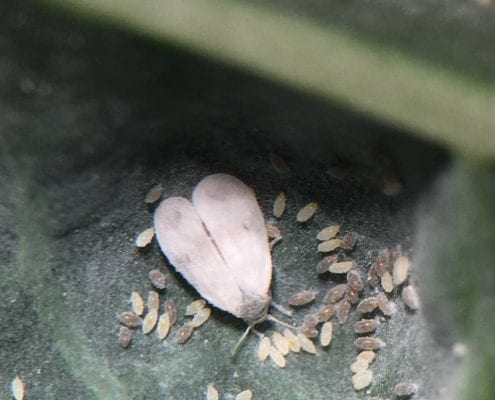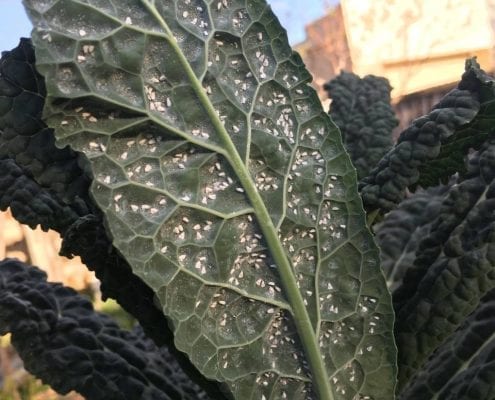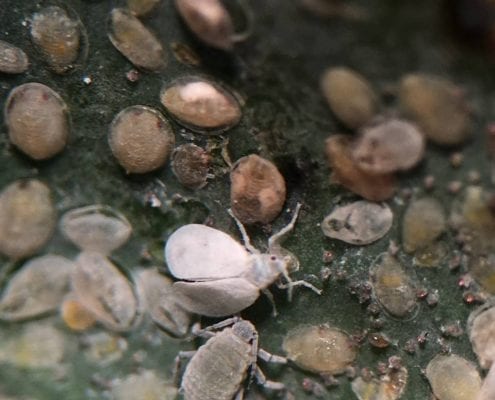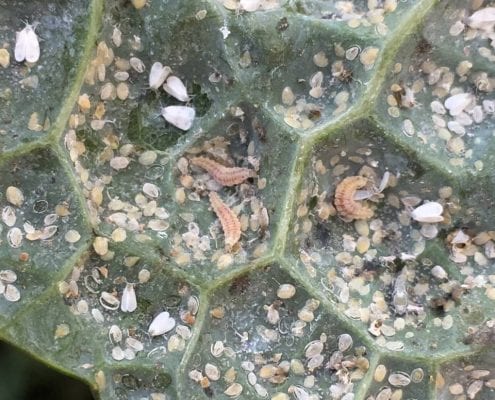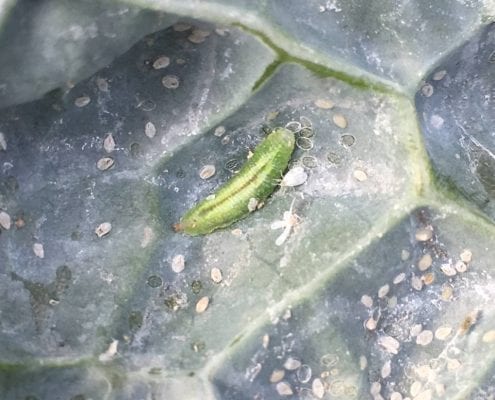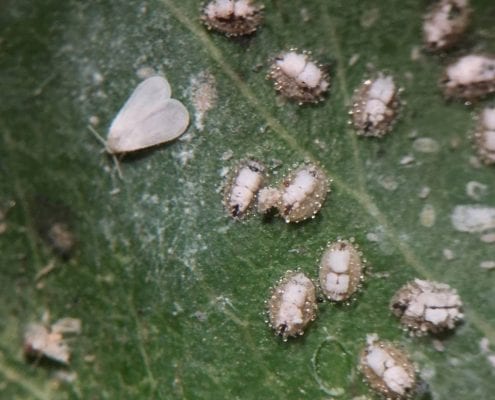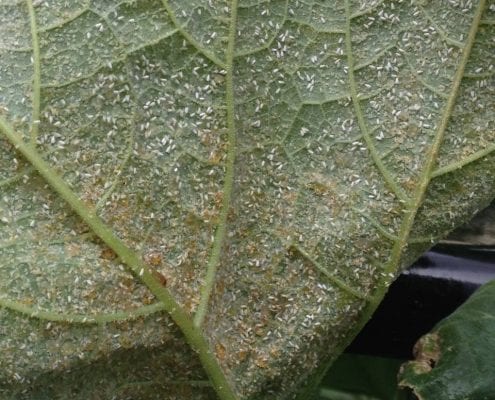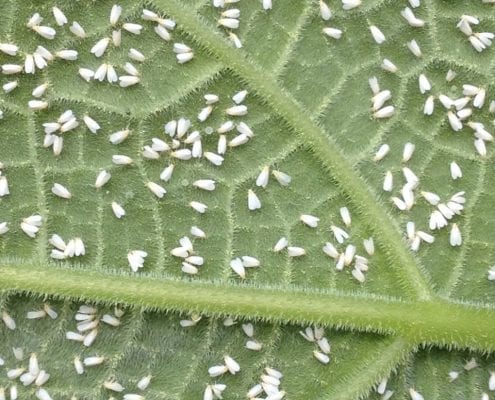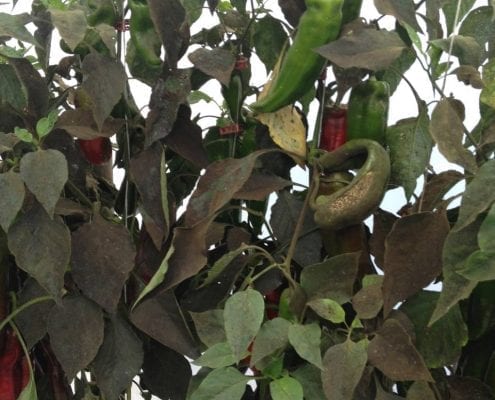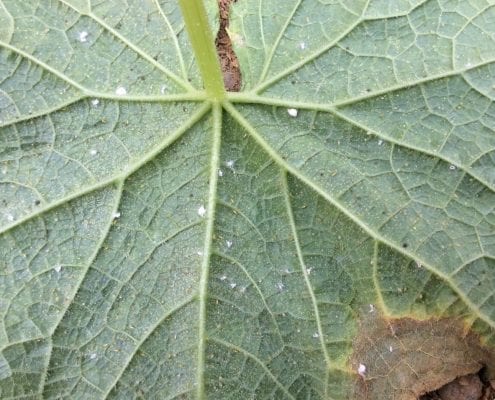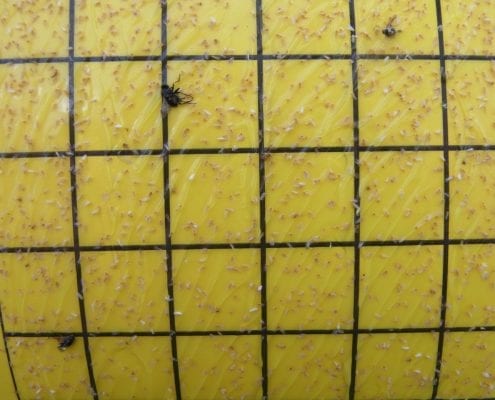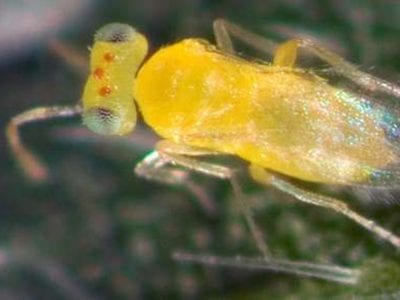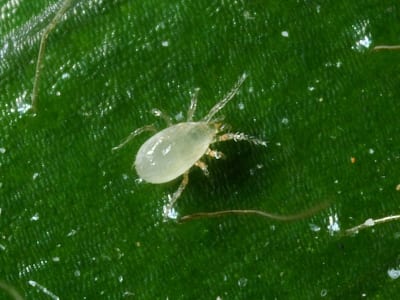Whiteflies
Whiteflies are sap sucking insects that are typically found feeding on the undersides of leaves. When infested plants are disturbed, clouds of adults fly into the air. Adults are about 1.5mm in length and look like very small moths, while the nymphs are oval shaped and have an appearance similar to soft scale insects.
Like other sucking insect pests, whiteflies have the capacity to increase in number very quickly under the right conditions, and can produce large quantities of ‘honeydew’, a sweet exudate that encourages the growth of sooty mould. This can reduce photosynthesis and make fruit look unsightly. Some whitefly species transmit plant viruses and whiteflies can also carry other pests species, such a broad mite, into the crops they feed on.
Important whitefly pest species include:
- Silverleaf whitefly (Bemisia tabaci biotybe B)
- Greenhouse whitefly (Trialeurodes vaporariorum)
- Spiralling whitefly (Aleurodicus disoersus)
- Brassica whitefly (Aleyrodes proletella)
A variety of natural enemies, including parasitoid wasps, predatory mites, predatory bugs, lacewings, ladybirds and hoverflies, can all contribute to the control of whitefly pests, and it is possible to achieve good results without necessarily resorting to chemical treatments.
Solutions
Eretmocerus hayati is a wasp parasite of silverleaf whitefly (Bemisia tabaci biotype B). It is suitable for release in both field and protected crops.
Montdorensis predatory mites feed on both whitefly and thrips, and they are proving to be a very effective biological control agent for these pests in protected crops.
Optiroll Super sticky rolls are specially designed to maximise the capture of flying insects such as whiteflies and thrips. Use ribbon to encircle the perimeter of the growing area or place ribbon along crop rows to mass-trap flying insects. This product is ideal for large area trapping.
Yellow sticky traps are a useful tool for monitoring populations of adult whiteflies and other flying insects.


